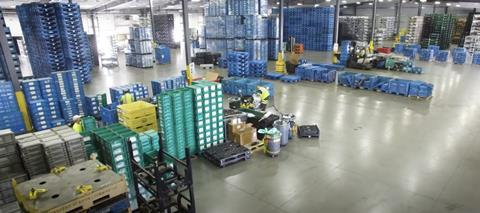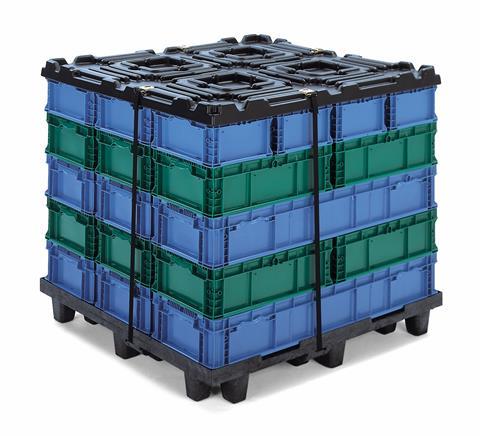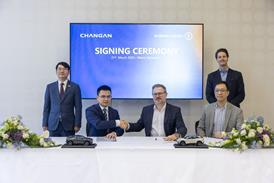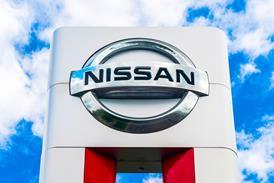Today’s consumer wants to buy from sustainable brands. The rise of the circular economy concept, coupled with pressure from both consumers and regulators for more sustainable products, is pushing automotive OEMs to reevaluate their processes across the supply chain, says packaging expert Orbis

With a renewed focus on sustainability also comes more scrutiny of the packaging used to store, transport and sequence high-cost and sensitive parts. This presents an opportunity for companies across the industry to analyze their supply chain packaging to optimize not only for sustainability, but also to improve their overall operational efficiency.
Defining the circular economy
The linear economy model has a very clear beginning and end, transforming raw materials into products that are made, used and then disposed of. But this take-make-waste philosophy no longer meets societal requirements. The circular economy concept – which is based on a continuous flow of product in the value circle – is the future of a successful and sustainable supply chain. It focuses on eliminating waste, keeping products in use and repurposing resources. Moreover, its value comes in preserving raw materials and designing out waste altogether.
Reusable packaging perfectly fits into that definition of the circular economy. Built with some amount of recycled material on the front end, reusable packaging solutions have a longer useful life than single-use alternatives and can then be recycled at the end of their service life. There are three main packaging optimizations OEMs can make to embrace the circular economy and improve their overall sustainability.
Find freight efficiencies
With freight rates continuing to increase, freight efficiency is more important than ever before. Reusable packaging solutions are designed to optimize trailers and are dimensionally consistent for repeatable transport. By fitting more containers onto a truck, OEMs can eliminate wasted truck space, reduce freight costs and support environmentally friendly material handling. Reusable packaging often nests or collapses when empty to optimize trailers for greater return-trip efficiency.
Another way to find transportation efficiencies is by maximizing the internal cubic dimensions of packaging. Maximum cubic capacity means more parts per bin and more bins per truckload in fewer truckloads, also resulting in less emissions.
Get creative with recycled content
Reusable packaging is designed for a long service life and many trips. It is often made with recycled content, and at the end of its service life, it can be fully recycled into other products. Some packaging providers offer programs to recover, recycle and reprocess obsolete or damaged packaging, often for a credit toward future packaging programs.
To help OEMs meet their sustainability goals, some packaging providers will even incorporate a customer’s scrap material into reusable packaging solutions – yet another way that packaging supports the circular economy concept. This creates a controlled stream of recycled content that can be easily reprocessed.
Another way packaging providers are working with OEMs to meet sustainability goals is by incorporating ocean-bound plastic waste into reusable packaging for the supply chain. Through these programs, plastic waste at risk of entering our oceans and major waterways is collected and reprocessed into reusable supply chain solutions.
DOWNLOAD OUR SUSTAINABILITY WHITEPAPER HERE!
Manage packaging effectively
Managing packaging inventory is critical in realizing the compound benefits of reusable packaging assets in automotive applications. As they prepare for vehicle launches, OEMs must have the right packaging in the right place at the right time to efficiently move parts in the supply chain. Through effective packaging management, companies can increase their packaging availability, reduce dwell time and improve utilization of their current packaging fleet.

Third-party packaging management services can better track, retrieve, clean inventory packaging assets. This allows OEMs and suppliers to focus on their core business of designing and manufacturing innovative vehicles for today’s consumer. Third-party management services ensure a consistent process is in place to route packaging to the proper locations, reducing loss and production interruptions.
Track-and-trace technologies, including RFID, Bluetooth and GPS, also provide greater visibility across the supply chain. These technologies can be built right into all types of packaging including totes, bulk containers, racks, dunnage and pallets, providing companies with an accurate view of where their assets are, ultimately reducing loss.
Overall, effective tracking creates supply chain visibility and provides useful data that can be used to better manage packaging. This fully maximizes the reduce, reuse and recycle concept.
As leading OEMs continue to turn to their supply chains for ways to become more sustainable, reusable packaging can help improve the flow of product, reduce costs, enhance profitability and, most importantly, help achieve a more sustainable supply chain. To realize these benefits, it is important to partner with a trusted packaging provider that can create a program best fit for your supply chain and help you leave a smaller environmental footprint.
Visit ORBIS at Automotive Logistics and Supply Chain Global Live in Detroit between October 5-7








































No comments yet